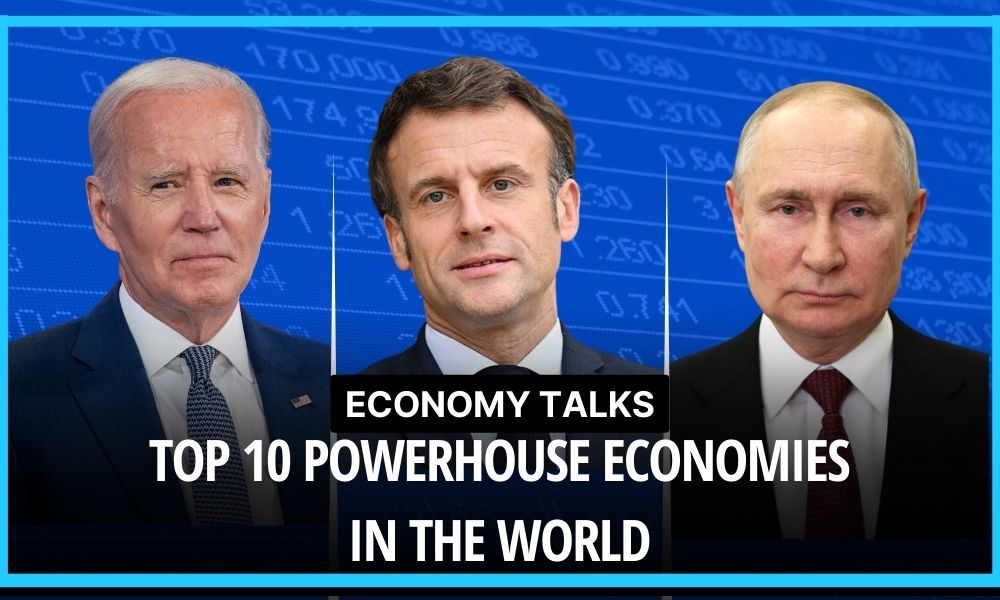
The world's economies are constantly evolving and reshaping the global landscape. Some countries have managed to rise to the top, establishing themselves as economic powerhouses, while others struggle to keep up. In this blog, we will delve into the top 10 economies in the world, exploring what sets them apart, their key drivers of growth, and the challenges they face in maintaining their positions.
| Are you a Tax Lawyer in USA? 👉Transform Your Brand: Click for Metamorphosis👈 |
The United States holds the title of the largest economy globally, known for its innovation, diverse industries, and technological advancements. As of 2021, its Gross Domestic Product (GDP) reached a staggering $22.675 trillion, accounting for approximately 24% of the world's total GDP. Home to numerous multinational corporations, it boasts a robust financial market and a highly skilled labor force. However, it faces challenges related to income inequality, with the top 1% of Americans holding over 30% of the country's wealth, fiscal deficits, and external trade imbalances.
China's remarkable growth over the past few decades has been nothing short of extraordinary. As the world's second-largest economy, China has leveraged its massive population and government-led initiatives to transform into a global manufacturing hub. In 2021, China's GDP surged to $17.720 trillion, making up around 18% of the world's GDP. The country continues to invest heavily in infrastructure, technology, and education while dealing with environmental issues and the need to rebalance its economy away from reliance on exports.
Japan has long been synonymous with technological innovation, making it one of the most advanced economies globally. As of 2021, Japan's GDP stood at $5.081 trillion, making it the third-largest economy in the world. Despite facing demographic challenges and deflationary pressures, Japan remains a significant player in international trade, with thriving automotive and electronics industries.
Germany has solidified its position as Europe's economic powerhouse, renowned for its precision engineering and high-quality manufacturing. In 2021, Germany's GDP amounted to $4.314 trillion, making it the fourth-largest economy globally. The country's export-oriented economy and focus on research and development have contributed to its strong economic performance. However, demographic changes and external uncertainties pose concerns for its future growth.
India's economic growth in recent years has been impressive, and it now stands as one of the world's fastest-growing major economies. With a population exceeding 1.3 billion, India's GDP reached $3.050 trillion in 2021. Boasting a young and dynamic workforce, India's burgeoning technology sector and service industries have been instrumental in its rise. Yet, it grapples with challenges like poverty, infrastructure gaps, and bureaucratic hurdles. Besides, it's important to have knowledge of how world giant countries run their business. Take a look at this:
The United Kingdom's economy has a rich history, once dominating global trade through its empire. As of 2021, the UK's GDP stood at $2.829 trillion, making it the sixth-largest economy in the world. Though still a significant financial center, it faces uncertainties due to Brexit's impact on trade relationships and investment. The UK's ability to adapt to new realities will be crucial in maintaining its economic prowess.
France is celebrated for its art, culture, and gastronomy, but it is also a major economic force in Europe. As of 2021, France's GDP amounted to $2.714 trillion, making it the seventh-largest economy globally. With a diverse industrial base and a focus on research and development, France remains a key player in global trade. However, addressing unemployment and fostering innovation are vital for its continued growth.
Italy's historical legacy and strong cultural identity are complemented by its contributions to the global economy. As of 2021, Italy's GDP reached $2.441 trillion, making it the eighth-largest economy in the world. As a top exporter of luxury goods and high-end automobiles, Italy faces the need to address structural issues in its economy, such as low productivity and high public debt.
As the largest economy in South America, Brazil boasts rich natural resources and a sizable agricultural sector. In 2021, Brazil's GDP amounted to $1.449 trillion, positioning it as the ninth-largest economy globally. Despite its potential, Brazil faces economic inequality, political instability, and environmental concerns that impact its growth prospects.
Canada ranks among the top economies globally, driven by its abundant natural resources and a well-developed service sector. As of 2021, Canada's GDP stood at $1.647 trillion, making it the tenth-largest economy in the world. Its economic success is often tied to its relationship with the United States, making it susceptible to external economic fluctuations.
The top 10 economies in the world present a diverse tapestry of strengths and challenges. Each country has unique characteristics that contribute to its economic prowess, but they all face the need to navigate uncertainties and adapt to a rapidly changing global landscape. By understanding these economies' drivers and vulnerabilities, we gain valuable insights into the interconnectedness of the global economy and the importance of sustainable growth strategies for continued prosperity.
| Are you a Tax Lawyer in USA? 👉Transform Your Brand: Click for Metamorphosis👈 |